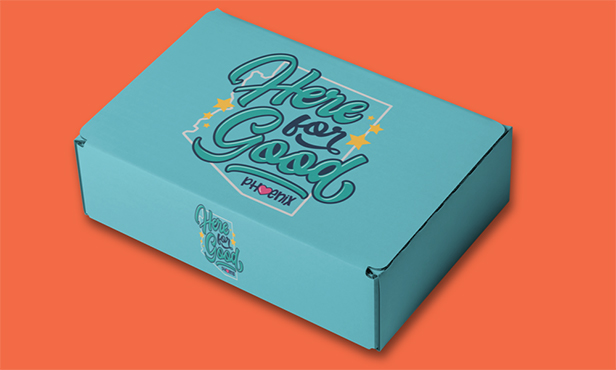News December 15, 2020
7 Ways to Boost Your Promo Business in Q1
In normal years, Q1 in the promo marketplace is a robust one, with a myriad of client events, meetings and tradeshows. The first quarter of 2021, of course, is going to be different. Here, we’ve compiled a list of practical, effective strategies to increase sales and stay top of mind with clients.
The first quarter of the year for the promo industry is typically a busy one, with meetings, events and the travel and hospitality markets kicking back into gear after the business slow down in December due to the holidays. But the usual calendar rhythm that we’ve all become accustomed to will be upended for the first few months of 2021, until vaccines become more plentiful, consumers become more confident in their business planning and buying and the economy becomes more robust. Simply put, Q1 is going to be tricky and unpredictable.

However, many promo professionals are optimistic, combining creative ideas and strategic thinking to start the new year strong. “A lot of companies are doing well, and the stock market reflects it,” says Leo Friedman, CEO and founder of iPromo (asi/229471). “I see nothing but opportunity for our space right now. I think the industry is going to be permanently changed. The folks that adjust are going to do really well, and the ones that don’t are going to really struggle.”
Try some of these strategies to avoid the Q1 doldrums and grow your business in the new year.
1. Revisit old-school selling tactics
In some ways, salespeople in the promo industry had become complacent prior to the pandemic, says Dale Limes, senior vice president of sales at Top 40 distributor HALO Branded Solutions (asi/356000). Most businesses understood the need for branded items and would seek distributors out, rather than vice versa.
“Our industry on the distributor side has become very reactive over the last many years compared to when I started in business,” Limes says. “Back in those days, you were very proactive because businesses didn’t know much about promotional products. You would knock on doors and people would buy. We’re really pounding out to our team that heading into 2021 is not a time to be reactive.”
Instead, salespeople need to bring back that old-school, door-knocking mindset (even if the doors they’re knocking on are of the virtual variety). In addition to filling your sales pipeline and prospecting, distributors should double down on educating their clients about hot trends and clever marketing ideas. “We need to be solving problems for clients, not selling products,” Limes adds.
HALO, for instance, created an electronic sales survey for its clients. It helped the distributorship better understand customers’ evolving needs in the COVID-era, Limes notes.
2. Don’t be afraid to try something new
Heat transfer supplier Transfer Express’s (asi/91804) business model was primarily events-focused – selling equipment and material at trade shows to people who sold decorated apparel for sports, schools and various events. When the pandemic hit, the company was stuck and had to quickly pivot into new markets. Transfer Express decided to target a more youthful market by building a following on YouTube and short-form social video app TikTok.
The strategy also involves partnering with Gen Z influencers who’ve already started their own decorated-apparel side hustles. For instance, a college student who runs an apparel business out of her dorm room and has more than 17,000 followers on TikTok discovered Transfer Express’s account and started following them. Transfer Express upgraded the student from the iron she was using to apply transfers to a more professional heat press, and the student has, in turn, promoted its products.
Transfer Express also gave a heat press to A Sneaker Life, a young YouTuber with more than 500,000 followers and his own clothing line, having him create some tutorial videos for his followers.
“We’ve gotten a lot of new customers this way,” says Sue Wilcosky, Transfer Express marketing manager. “We were forced to change, but it was a good thing because we discovered a market that we’d underutilized.”
In 2021, the supplier plans to continue its youth-focused social media strategy. Transfer Express added a videographer to its staff to produce higher-quality videos and is running a design contest to give away a free heat press, Wilcosky says.
3. Lean into technology
E-commerce has been one of the biggest success stories of the pandemic, and that’s unlikely to change even after mass vaccinations and the lifting of COVID restrictions. The ability to quickly create dynamic online stores for customers helped Yellow Springer (asi/364880) thrive in 2020. The small Ohio-based shop, run by a father and daughter team, has opened over a dozen online stores since the pandemic started, according to owner Mark Heise. “We’re up over 300% where we were last year,” he adds.
Yellow Springer’s clients include several trail associations, school systems and some nonprofits. “All organizations have been feeling the pinch since they can’t hold events,” Heise says. But they can still sell swag (or even give it away with the help of sponsors) to their members to get their message across and raise funds.
For Q1, Heise says he plans to return to those organizations he set up stores for in 2020 and help them with new merch campaigns, since they likely won’t be able to get into event venues until the fall. “That’s going to carry us through the spring,” he says.
In addition to e-commerce, it behooves salespeople to brush up on their videoconferencing etiquette, since Zoom meetings are also likely here to stay. Limes says Halo has been teaching its team best practices for Zoom, in much the same way it once had to teach them the proper way to send emails or leave voicemails.
4. Extend the gifting season
Employees across many businesses will still be working from home in the first quarter of 2021 and beyond. Technology has enabled them to be just as productive as they are in the office, but the remote work force still leaves many people feeling disconnected from company culture.
To promote connection, wellness and warmth, a lot of companies have been sending gift boxes to employees, and they’re not limiting them to just December, says Friedman. Instead, they’re extending the gifting season, planning drop-shipments to workers at least monthly, he adds.
“Companies are also giving out a lot more high-end gifts,” Friedman says. Budget that was originally slated for travel and hospitality has been transferred to swag and corporate gifts, he adds.
Indeed, custom kitting was huge in 2020, and the trend will continue into 2021. “Our kitting operations are 10 times higher,” Limes says. “We built a new 25,000-square-foot kitting center just for the overload. It’s just crazy right now.”
Consider pitching food gifts (like a taco Tuesday cooking kit), gift sets that include personalization to help combat feelings of isolation during the winter months, new hire welcome kits, and any items with a high perceived value that will surprise and delight the recipient. Be sure the presentation of any items is perfect. Half the fun of getting these types of gifts is in the unboxing.
5. Plan ahead (but not too far in advance)
At Nashville, TN-based distributor On Promos powered by Proforma (asi/300094), Kimble Bosworth and her team have started meeting with clients more frequently, getting them in the habit of quarterly consults. “The new normal is you can’t plan a year in advance,” Bosworth says. “But you can certainly plan for a quarter. … All of our conversations around January through March are about outfitting people for the long winter.”
She’s also been advising clients to start planning now for trade shows and events that might be back on in the summer or fall of 2021.
“Let’s plan the events now as if they’re happening – get the color scheme, design and all the groundwork laid, so that in August when you have the event, you won’t be behind the eight ball,” Bosworth tells them. “It takes a lot of time, and you don’t make any money on it now, but our customers are going to be so grateful that we did this for them early and reserved that inventory. It keeps us busy and in front of our customer. So much of this is about continuing conversations with your customer and not being forgotten.”
6. Master messaging
During a traditional trade show or sales meeting, a business could tell its story in person, then leave a promotional product as a reminder, says Charity Gibson, national account coordinator at Newark, NJ-based Peerless Umbrella Co. (asi/76730). In the virtual era, however, the promotional product itself “needs to pull double duty and serve as both the storyteller and the memento,” she says. “If you can get the right message in the hands of the right people at the right time, you’ll win.”
7. Support local businesses … again
Early on in the pandemic, with the Here for Good movement and other charitable initiatives, screen printers and distributors were able to help small businesses raise funds during lockdowns. The T-shirt fundraisers also helped keep apparel decorators afloat. It was a win-win.

With coronavirus cases spiking and many businesses shut down or at reduced capacity, there’s again an opportunity to help support local commerce, says JP Hunt, partner and co-founder of industry software firm InkSoft. Inksoft has put together a marketing kit for its customers around the idea of Here for Good 2.0. “The twist is this notion of boxed up local,” Hunt says. Putting together merch boxes for small businesses, rather than focusing solely on T-shirts, keeps the concept novel and helps increase margins and profitability, he says.
“We think this is going to be a big theme in Q1 in particular as COVID continues to rage through the community,” Hunt says. “It will help a lot of our customers understand that there’s an ongoing need to support local.”
